Hi everyone! I apologize for the long break between posts. I’m currently doing my general surgery posting and it’s been pretty grueling. Hopefully, I’ll be able to get back into the groove of writing.
Today we’ll be talking about cauliflower ear and auricular hematomas. Cauliflower ear is the permanent deformity that results when an auricular hematoma is not fully drained, recurs, or is left untreated.
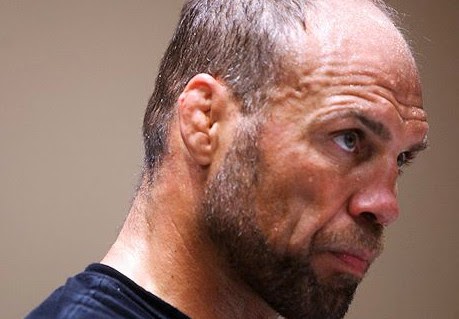
What is an auricular hematoma?
Before we talk about the injuries that can occur to the ear, we need to have an understanding of the anatomy of the ear.
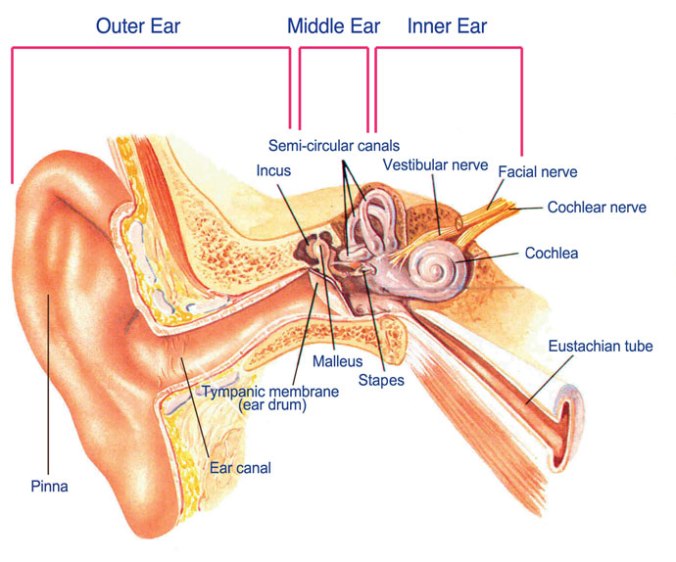
The ear is actually composed of 3 main parts: the outer, middle and inner ear. Today we’ll be focusing on the outer ear because it is most vulnerable to trauma.
The auricle (also known as the pinna) is the visible part of the ear that lies outside the head.
The auricle has a framework of cartilage that provides it with its shape. Adjacent to the cartilage is a dense layer of connective tissue called the perichondrium. The cartilage has no blood supply and is dependent on the perichondrium for its blood supply and nutrients.
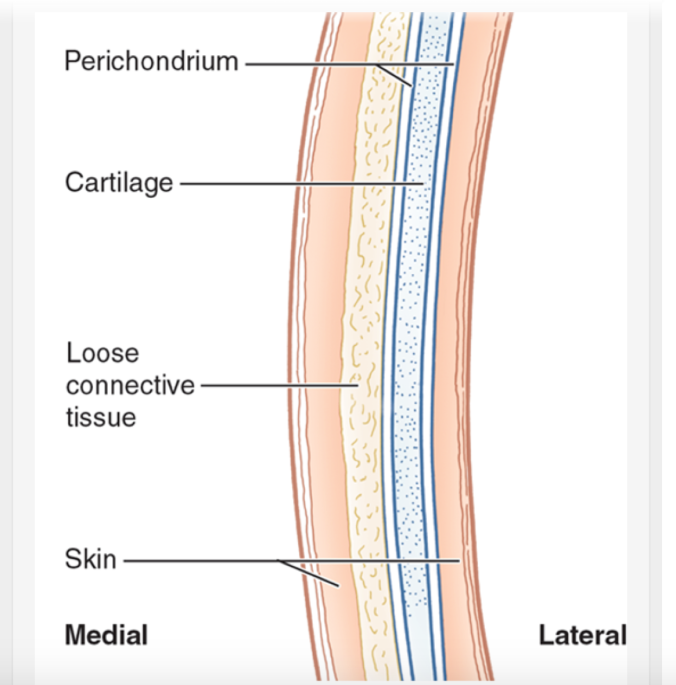
Shearing forces to the auricle (from a direct blow to the ear, or grinding of the ear against a surface) can lead to the lateral (forward facing side) perichondrium separating from the underlying cartilage. This can tear the perichondrial blood vessels, which leads to bleeding within the enclosed space. The blood is trapped, leading to the formation of a hematoma.
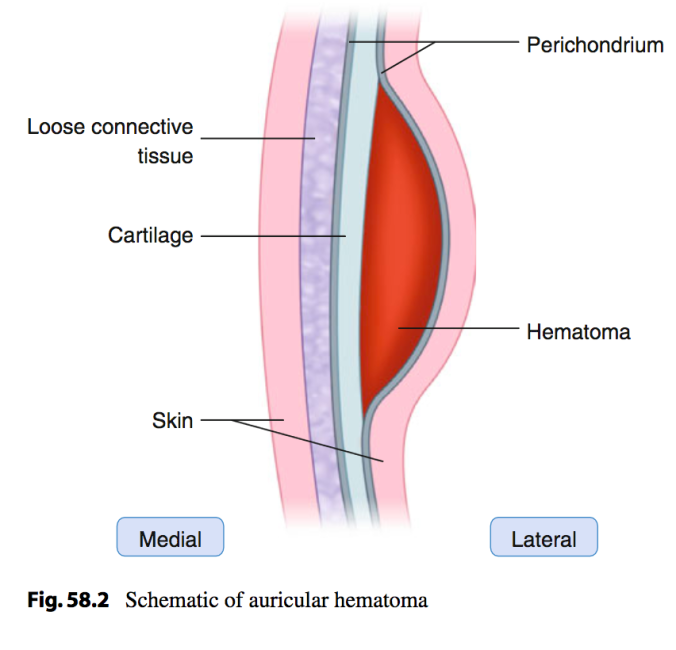 .
. 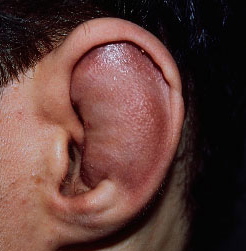
How does cauliflower ear develop?
The hematoma acts as a physical barrier between the cartilage and its perichondrial blood supply. The cartilage, unable to get a sufficient supply of fresh blood, starts to die. It then thickens and scars, and new cartilage starts to form. However, this process is disorganized, leading to asymmetrical cartilage formation and ear deformity.
Treatment of auricular hematomas
If you sustain an injury to your outer ear, pause and evaluate the severity of the injury. You should be extra cautious if you sustained a blow to your ear. Should that happen, look out for certain red flags that indicate a more severe underlying issue:
Head injuries – loss of consciousness, amnesia before or after event, persistent headache, vomiting.
Damage to middle and inner ear – loss of hearing, feeling that the room is spinning around you.
If any of these red flags are present, you should head to the nearest emergency department.
If the injury is less severe (grinding force against your ear etc.), determine if a hematoma has formed.
If your auricle feels painful when you exert pressure on it, but there are no signs of bleeding (hematoma etc) aside from some redness, the injury is unlikely to be severe. You do not need to see the doctor and you can treat it yourself by applying ice and taking over-the-counter painkillers (paracetamol etc.) to ease the pain. Simple bruising, without any formation of a hematoma, can be treated in the same way.
If a hematoma has formed, you should seek medical attention as soon as possible. Early drainage of the hematoma and re-apposition of the perichondrial layer to the underlying cartilage restores perfusion to the cartilage and reduces the likelihood of cauliflower ear. If left alone, the hematoma will begin to clot and organize within 48 hours.
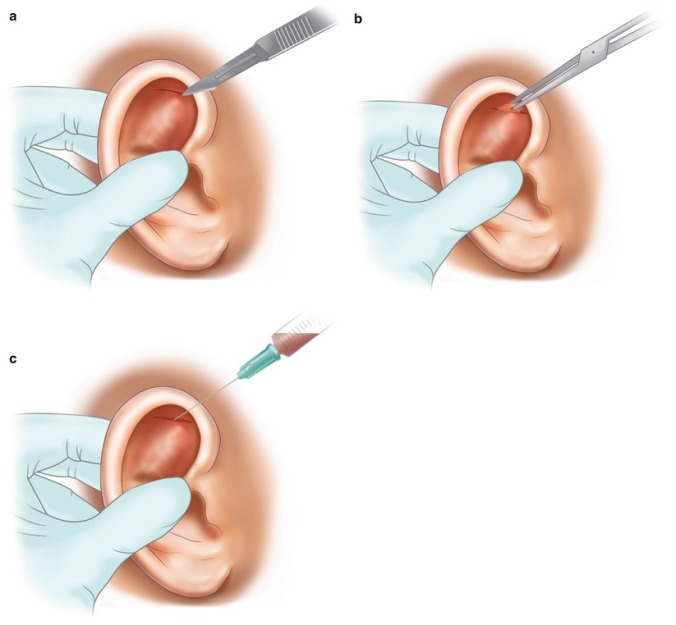
There are multiple reasons I recommend visiting a healthcare professional as opposed to self-drainage with a needle. Firstly, the doctor/nurse can give you a local anesthetic injection to help ease the pain.
Secondly, hematomas that are greater than 2cm or have been present for greater than 48 hours may need to be incised and drained using a scalpel instead of a regular needle. This should ideally be done by a trained professional.
Lastly, it isn’t enough to simply drain a hematoma. A compression dressing must be applied to the ear to prevent the re-accumulation of blood within that space. Without this, the hematoma will simply recur and you’ll end up back at square one.
You should refrain from activity that places your ear at risk of additional trauma until the ear is healed (No hard sparring, though light drilling may be possible). Full return to training can occur as early as seven days after the initial injury if the hematoma does not re-accumulate.
Prevention
It it is strongly recommended that protective headgear be worn to prevent auricular hematomas. In a 1989 survey conducted by the Department of Otolaryngology, Ohio State University, Columbus (1); auricular injuries occurred more frequently among collegiate wrestlers who were not wearing headgear (52 versus 26 percent for auricular hematoma and 27 versus 11 percent for cauliflower ear, respectively.)
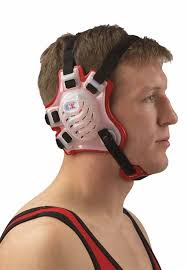
That being said, not everyone likes wearing headgear. I personally don’t wear headgear because I don’t like how warm and stuffy they make my ears feel. I’m a hobbyist and I frankly don’t train enough to accumulate that much abuse to my ears (though a freak blow to my ear could definitely still happen).
Conclusion
If you have an auricular hematoma, drain and compress it as soon as possible!
I hope this post was useful to you! Let me know what you think and feel free to give me suggestions for my next post!
References
(1): Schuller D, Dankle S, Martin M, Strauss R. Auricular Injury and the Use of Headgear in Wrestlers. Archives of Otolaryngology – Head and Neck Surgery. 1989;115(6):714-717.
(2): Assessment and management of auricular hematoma and cauliflower ear [Internet]. Uptodate.com. 2016 [cited 21 August 2016]. Available from: http://www.uptodate.com/contents/assessment-and-management-of-auricular-hematoma-and-cauliflower-ear
(3): Ganti L. Atlas of emergency medicine procedures.


Any thoughts on using these instead of compression dressings?
https://www.amazon.com/Cauliflower-Ear-Treatment-Caulicure-Wrestling/dp/B01DU4W9TW/ref=sr_1_1?ie=UTF8&qid=1471832669&sr=8-1&keywords=cauliflower+ear+treatment
LikeLike
I personally have no experience with caulicure. It seems like it would work! As long as you follow the basic principle of draining the hematoma (using a clean needle to avoid infection) and compressing the ear to prevent re-accumulation, you should be okay!
LikeLike
Great post. When I first started training BJJ, I had nightmares about Cauliflower. Whenever I saw someone with it, I would cringe as hell. Then, when seeing a video from a tournament or whatever, I was always looking at the people’s ears to see if there was a higher level practitioner without cauliflower. Then I had to gather all the resources and conclude what is written in this article – and seeing people draining their own ears on YouTube is not that helpful, honestly.
Great job! Helpful and needed!
LikeLike